Our family cruise brought us to San Juan, the second port on our itinerary. There was really only one place we wanted to visit on the island, Castillo San Felipe del Morro, known these days simply as El Morro. Strategically placed at the northeast entrance to the Bay of San Juan, this massive fort has protected the city for nearly 500 years. Though its origins were half a millennia ago, the most recent fortifications occurred as recently as World War II. In keeping with our resolution to select excursions not sponsored by the cruise line, we simply walked from the ship to the edge of the city and found a taxi stand nearby. The $12 USD cab ride dropped us off in front of the fort in less than 20 minutes.
 In those early years, pirates and raiders would attempt to enter the bay at the western side, trying to keep out of range of the guns at the fort. In the image above, the western entrance is visible in the upper center. It didn’t take long for the city’s defenders to place a small garrison of armament on that island. Ships trying to sneak past would be caught in a crossfire between the two fortifications.
In those early years, pirates and raiders would attempt to enter the bay at the western side, trying to keep out of range of the guns at the fort. In the image above, the western entrance is visible in the upper center. It didn’t take long for the city’s defenders to place a small garrison of armament on that island. Ships trying to sneak past would be caught in a crossfire between the two fortifications.
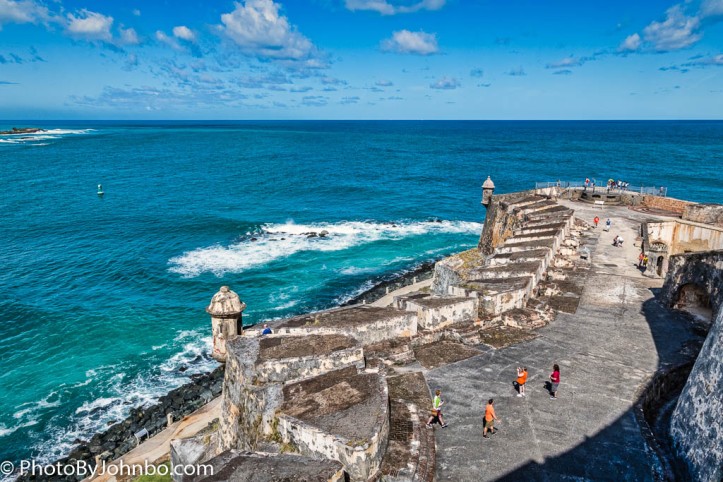 The multi-story compound is massive, the several levels housing rooms used for many different purposes. No doubt the soldiers got their exercise maneuvering up and down the stairs and ramps as they moved from level to level while pursuing their daily tasks.
The multi-story compound is massive, the several levels housing rooms used for many different purposes. No doubt the soldiers got their exercise maneuvering up and down the stairs and ramps as they moved from level to level while pursuing their daily tasks.
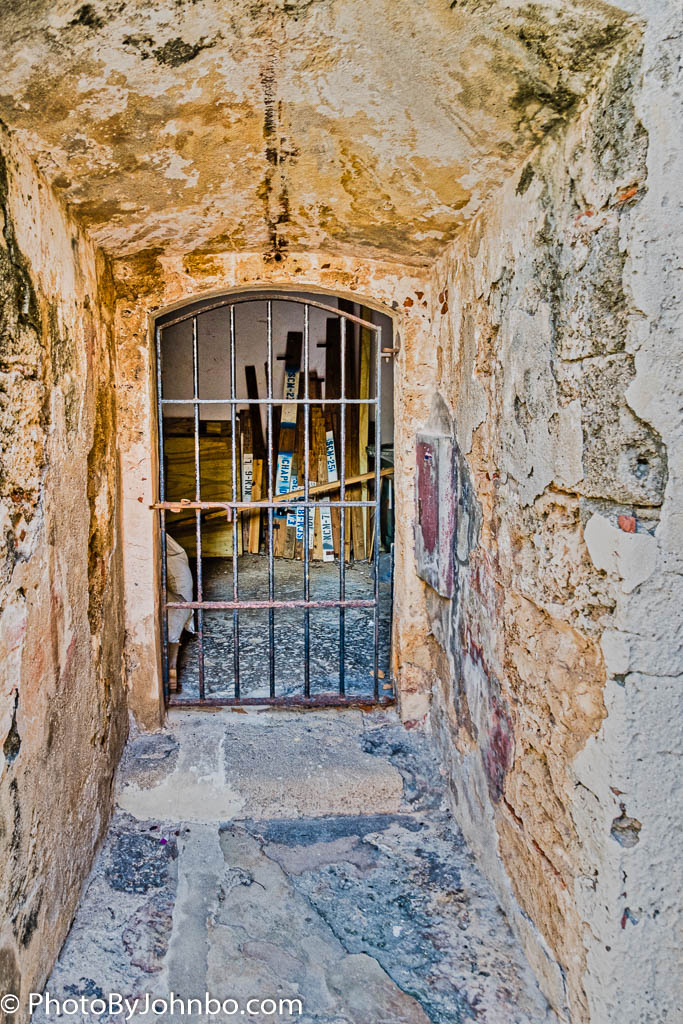 For those who ran afoul of the law, a jail dug deep into the core housed those prisoners. Though this room was locked, another barred entrance let us get a closer look at the jail cell. There was no view of the ocean to give the prisoner a chance to while away the hours daydreaming of a seagoing escape.
For those who ran afoul of the law, a jail dug deep into the core housed those prisoners. Though this room was locked, another barred entrance let us get a closer look at the jail cell. There was no view of the ocean to give the prisoner a chance to while away the hours daydreaming of a seagoing escape.
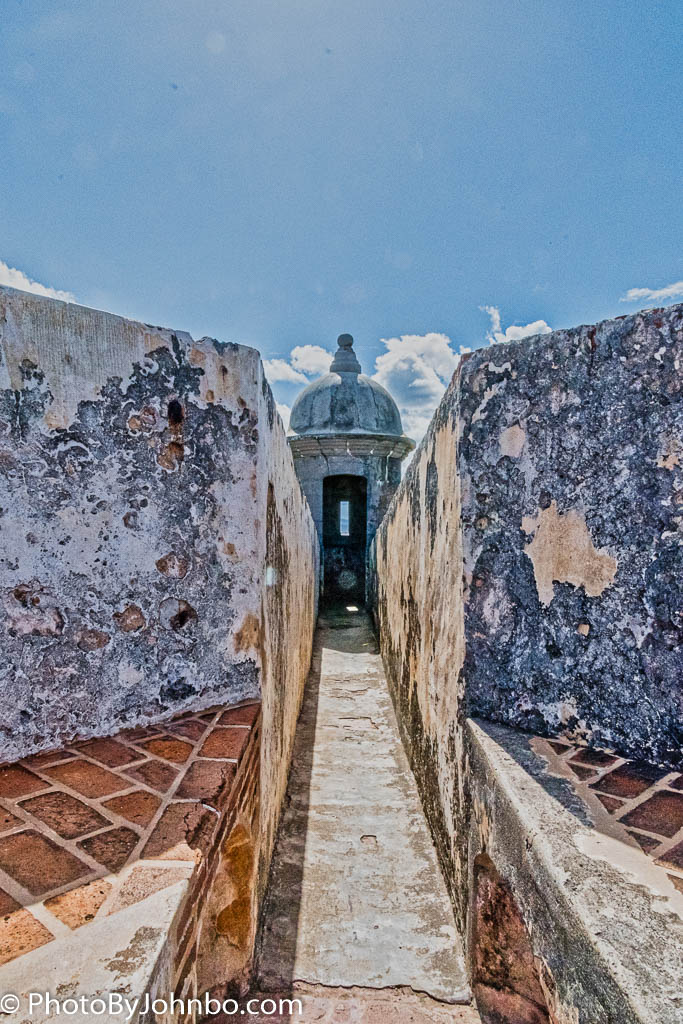 Strategically placed, several parapets gave guards a view of a small slice of the area around the fort. Roughly half of these guard posts were ocean lookouts. The southern and eastern posts provided protection from the flank and rear overland attacks.
Strategically placed, several parapets gave guards a view of a small slice of the area around the fort. Roughly half of these guard posts were ocean lookouts. The southern and eastern posts provided protection from the flank and rear overland attacks.
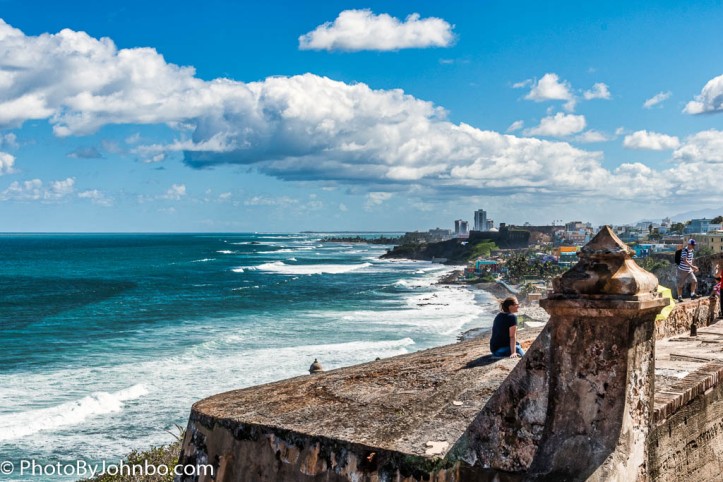 Looking to the southeast, views of the island and ocean are ideal for just sitting and relaxing after walking through the living compounds and traveling to the upper levels of the fort.
Looking to the southeast, views of the island and ocean are ideal for just sitting and relaxing after walking through the living compounds and traveling to the upper levels of the fort.
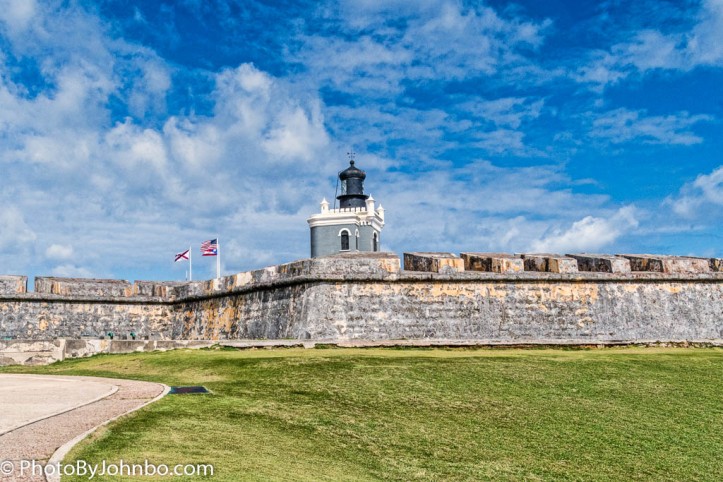 The highest level of the fort is a lighthouse that stands guard over the rocky coastline warning friends and foes of the danger on the rocks below. The original lighthouse, the first on the island, was built in 1846 but struck by artillery fire during the Spanish-American War in 1898. It was reconstructed and returned to service with its current Moorish style architecture in 1906.
The highest level of the fort is a lighthouse that stands guard over the rocky coastline warning friends and foes of the danger on the rocks below. The original lighthouse, the first on the island, was built in 1846 but struck by artillery fire during the Spanish-American War in 1898. It was reconstructed and returned to service with its current Moorish style architecture in 1906.
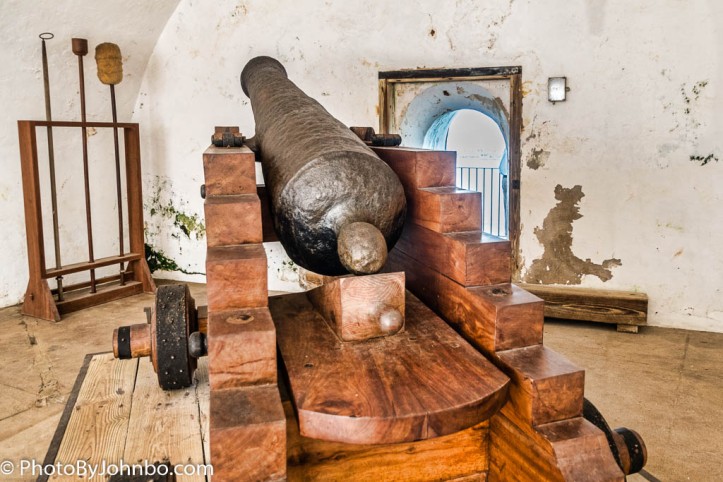 Visitors who wander through the rooms will find both placard displays and artifacts from the history of the fort. Like the image of the cannon above, the gallery contains other images captured from inside the thick walls of the fort.
Visitors who wander through the rooms will find both placard displays and artifacts from the history of the fort. Like the image of the cannon above, the gallery contains other images captured from inside the thick walls of the fort.
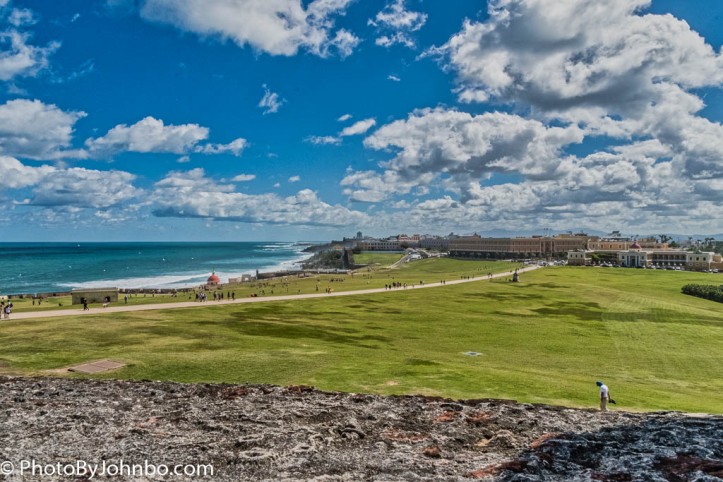 The entire area around the fort is part of a National Historic Site managed by the National Park Service. Walls that protect the city date back to the 1630s. Today, the Paseo del Morro is a National Recreation Trail. Once a maintenance road, visitors will someday be able to walk directly betwen Castillo San Felipe del Morro and Castillo San Cristobal. The gallery below features images captured at the fort. In most browsers, you can click on an image to enlarge it and to scroll through the gallery.
The entire area around the fort is part of a National Historic Site managed by the National Park Service. Walls that protect the city date back to the 1630s. Today, the Paseo del Morro is a National Recreation Trail. Once a maintenance road, visitors will someday be able to walk directly betwen Castillo San Felipe del Morro and Castillo San Cristobal. The gallery below features images captured at the fort. In most browsers, you can click on an image to enlarge it and to scroll through the gallery.
John Steiner

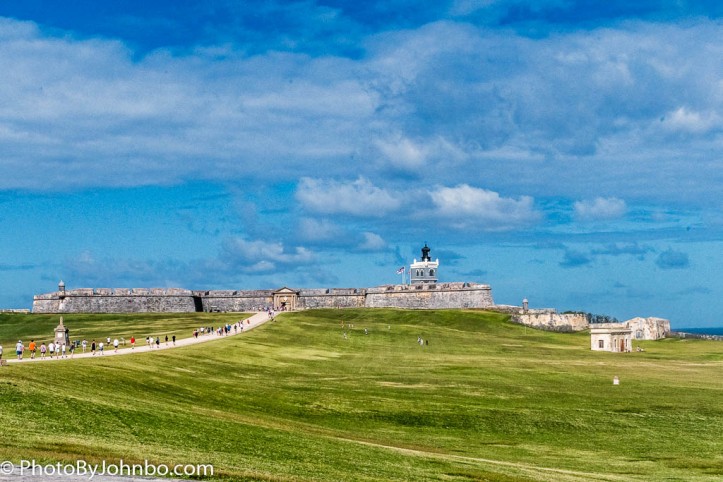


















That fort is immense! I didn’t understand the scale until the shot with people in it. What a fun & historic tour!
It certainly is much bigger than I imagined.
Built to last forever!
It was. I was surprised to see it was reinforced with armaments as late as WW II.